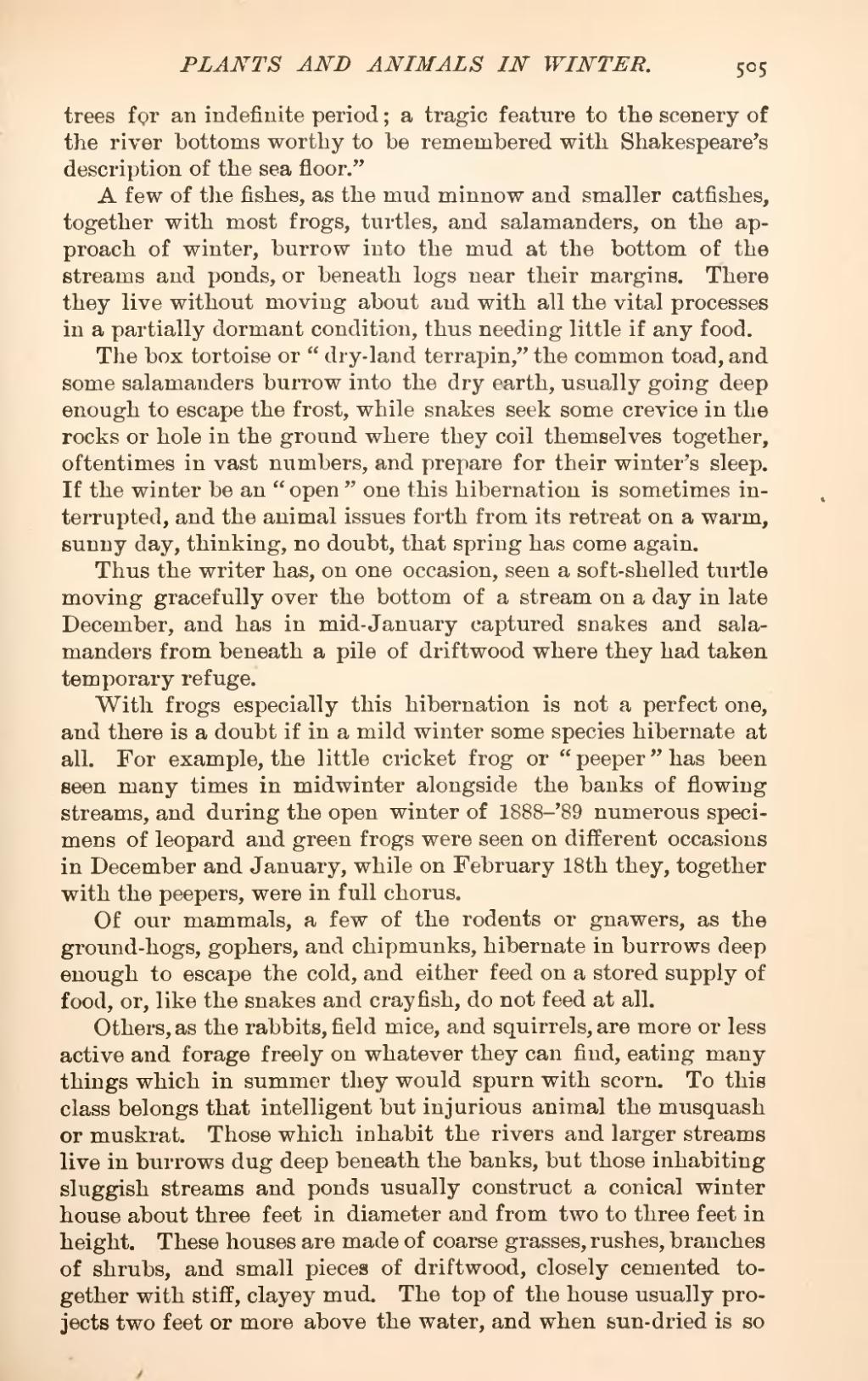trees for an indefinite period; a tragic feature to the scenery of the river bottoms worthy to be remembered with Shakespeare's description of the sea floor."
A few of the fishes, as the mud minnow and smaller catfishes, together with most frogs, turtles, and salamanders, on the approach of winter, burrow into the mud at the bottom of the streams and ponds, or beneath logs near their margins. There they live without moving about and with all the vital processes in a partially dormant condition, thus needing little if any food.
The box tortoise or "dry-land terrapin," the common toad, and some salamanders burrow into the dry earth, usually going deep enough to escape the frost, while snakes seek some crevice in the rocks or hole in the ground where they coil themselves together, oftentimes in vast numbers, and prepare for their winter's sleep. If the winter be an "open" one this hibernation is sometimes interrupted, and the animal issues forth from its retreat on a warm, sunny day, thinking, no doubt, that spring has come again.
Thus the writer has, on one occasion, seen a soft-shelled turtle moving gracefully over the bottom of a stream on a day in late December, and has in mid-January captured snakes and salamanders from beneath a pile of driftwood where they had taken temporary refuge.
With frogs especially this hibernation is not a perfect one, and there is a doubt if in a mild winter some species hibernate at all. For example, the little cricket frog or "peeper" has been seen many times in midwinter alongside the banks of flowing streams, and during the open winter of 1888–’89 numerous specimens of leopard and green frogs were seen on different occasions in December and January, while on February 18th they, together with the peepers, were in full chorus.
Of our mammals, a few of the rodents or gnawers, as the ground-hogs, gophers, and chipmunks, hibernate in burrows deep enough to escape the cold, and either feed on a stored supply of food, or, like the snakes and crayfish, do not feed at all.
Others, as the rabbits, field mice, and squirrels, are more or less active and forage freely on whatever they can find, eating many things which in summer they would spurn with scorn. To this class belongs that intelligent but injurious animal the musquash or muskrat. Those which inhabit the rivers and larger streams live in burrows dug deep beneath the banks, but those inhabiting sluggish streams and ponds usually construct a conical winter house about three feet in diameter and from two to three feet in height. These houses are made of coarse grasses, rushes, branches of shrubs, and small pieces of driftwood, closely cemented together with stiff, clayey mud. The top of the house usually projects two feet or more above the water, and when sun-dried is so
